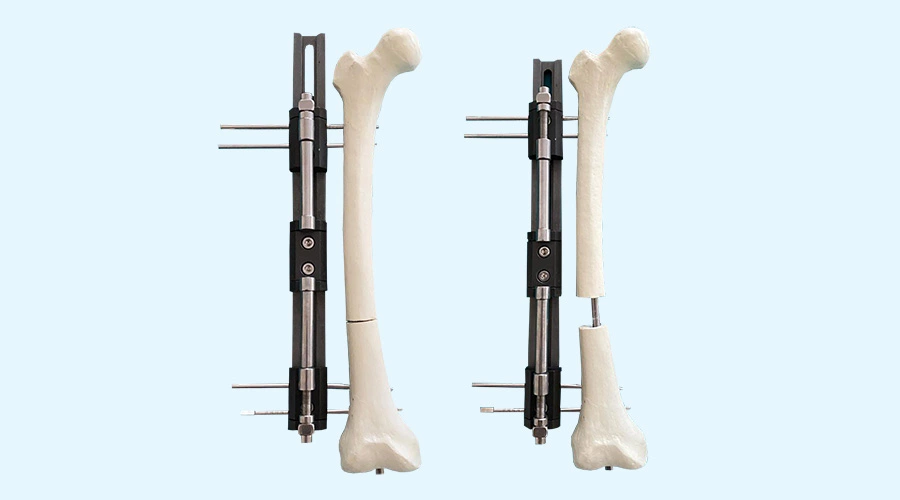A Stable Approach to Limb Lengthening
What Is Lengthening Over Nail?
Lengthening Over Nail (LON) is a limb lengthening technique that combines external and internal fixation to achieve gradual bone elongation while maintaining stability. This method involves the use of an external fixator during the initial phase, followed by the insertion of an intramedullary nail to provide internal support. By integrating both techniques, LON offers enhanced stability, reduced external fixation time, and a lower risk of complications compared to traditional external-only methods.
LON is particularly useful for individuals who require significant bone lengthening while minimising the discomfort and prolonged use of external fixation devices.
Who Can Benefit from Lengthening Over Nail?
LON is a suitable procedure for:
- Individuals with limb length discrepancies due to congenital conditions or trauma.
- Patients requiring bone lengthening with increased stability and reduced external fixator wear time.
- Those looking for a more balanced approach between external and internal fixation.
- Individuals with previous limb injuries that have resulted in shortened bone length.
Common Concerns About Lengthening Over Nail
Is Lengthening Over Nail Safe?
Yes. LON is widely used in limb lengthening procedures and has been shown to provide a safe and stable method for controlled bone distraction. By using an intramedullary nail, the procedure reduces the reliance on an external frame, lowering the risk of pin site infections and increasing patient comfort.
How Long Is the Recovery Process?
The recovery process consists of:
- Lengthening Phase – Bone distraction occurs at approximately 1 mm per day, typically lasting 2-3 months.
- External Fixator Removal – Once sufficient length is achieved, the external fixator is removed, and the intramedullary nail provides internal stability.
- Bone Consolidation – The new bone continues to strengthen over several months, with full healing typically taking 9-12 months.
Will the Procedure Be Painful?
Patients may experience mild to moderate discomfort, especially during the lengthening phase. However, pain management strategies, including medication and physiotherapy, help reduce discomfort and ensure a smoother recovery.
What Are the Risks?
Like any surgical procedure, LON carries potential risks, including infection, delayed bone healing, and joint stiffness. However, regular monitoring, post-surgical physiotherapy, and proper care significantly reduce these risks.
How Does Lengthening Over Nail Work?
- Surgical Preparation – The affected bone is surgically cut (osteotomy) in a controlled manner.
- External Fixator Application – A temporary external fixator is applied to initiate the lengthening process.
- Bone Distraction – Gradual bone lengthening occurs using the external fixator at a controlled rate.
- Intramedullary Nail Insertion – Once the desired length is achieved, an intramedullary nail is inserted to stabilise the bone internally.
- External Fixator Removal – The external fixator is removed, allowing the bone to consolidate while supported internally by the nail.
- Final Recovery & Rehabilitation – Patients continue with physiotherapy and follow-up monitoring to ensure proper healing and mobility.
Why Choose Advanced Orthopaedics for Lengthening Over Nail?
Skilled Surgical Team
Led by Dr Sarbjit Singh, a Senior Consultant Orthopaedic Surgeon, our clinic provides tailored treatment plans to ensure safe and effective limb lengthening procedures.
Balanced Approach to Limb Lengthening
LON minimises external fixation time while ensuring internal stability, providing patients with a well-structured approach to bone lengthening.
Comprehensive Post-Surgical Care
We offer personalised follow-ups, physiotherapy support, and long-term recovery guidance to help patients regain function and mobility with confidence.
Take the Next Step
If you are considering Lengthening Over Nail for limb correction, our team at Advanced Orthopaedics is here to support you. Schedule a consultation today to learn more about your options and take the first step toward improved limb function and balance.





